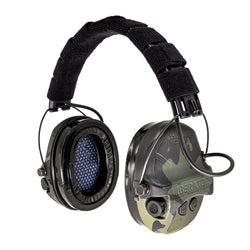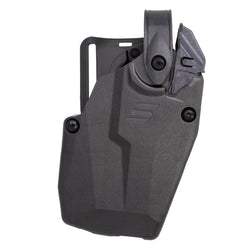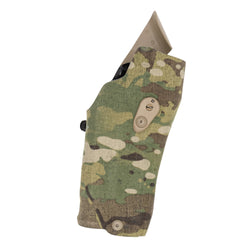You can be forgiven for thinking the Marine Corps bulldog became a gyrene cultural icon due to certain characteristics of that breed. Bulldogs are pugnacious, willing to fight anyone or anything, fart frequently, and, of course, slobber, snort, and growl. No, it’s no stretch to apply those traits to the typical gyrene, but that’s not actually how it happened.
Permit me to explain.
The United States Marine Corps is the world’s largest, most dangerous cult. As with any such ideological organization (but particularly the zealous ones), the Marines have their own traditions, emblems, iconography, and even lexicon. The bulldog is one of those emblems, and has been since 1922. The breed is more than just an institutional, ceremonial mascot (though it is that). It’s an integral part of every Marine’s identity, which means it’s a part of the USMC’s identity.
Or maybe I have that backwards. The Marine Corps’ silent drill team travels with a bulldog (as of this writing, that’s PFC Chesty XVI, or Chesty the Sixteenth). Various installations also have their own “official” English Bulldog mascots, ranging in rank.
You can see Chesty XVI above in an awards ceremony in Washington, D.C. There, the appropriately serious-looking bulldog was awarded the Navy and Marine Corps Good Conduct Medal by Secretary of the Navy John Phelan for three years of honorable service at Marine Barracks, Washington. (USMC photo by Cpl. Chloe McAfee, courtesy Defense Visual Information Distribution Service (DVIDS).

The picture above is associated with the movie “Tell it to the Marines,” and was captioned in part, “Two bulldogs of the service…”
Interestingly, like all gyrenes, the bulldogs themselves run the gamut from exemplary Marines to those incorrigible jarheads who suffer reprimands, reductions in rank, and other non-judicial punishments (NJP). These latter Devil Dogs are often the source of constant trouble. Infractions include the destruction of government property, failure to obey lawful orders, biting NCOs, etc. At least one even put the chomp on the Chief of Naval Operations (CNO).
Luckily, a penchant for certain kinds of trouble can be a good thing in a Marine (within limits). After all, many an outstanding combat Marine was a soup sandwich troublemaker in garrison.
“Take me to the brig. I want to see the real Marines.” ~ Lt. Gen. Lewis B. “Chesty” Puller
The tradition of a Marine Bulldog mascot dates back to the aftermath of WWI. That was when the first official enlistment took place. The canine in question was bought by none other than BGen Smedley Butler, who changed the dog’s name from “King Bulwark” to “Jiggs.” Jiggs was officially enlisted in the Marine Corps on October 7, 1922, at Marine Corps Base Quantico. General Butler signed the enlistment papers for him and tasked him with representing the Marine Corps at public functions and improving Marine morale.
Pvt. Jiggs was reportedly a hard-charger and, within three months, was promoted to Corporal. By the end of 1924, Jiggs had put on Sergeant, and just a few months later was promoted to Sergeant Major.
Later bulldog mascots would attain their ranks more slowly.
It wasn’t just that Jiggs was introduced by no less a Marine than the legendary Smedley Butler that made bulldogs an almost immediate counterpart to US Marines. As any number of sources (and gyrenes) could tell you, it was as much or more a result of the Devil Dog moniker the Marines legendarily earned at the Battle of Belleau Wood. That’s where the Teufelhunde nickname originated, after all…and if that bit of USMC lore didn’t quite develop the way the public and the media proclaimed, well…just remember the Liberty Valance quote: “Print the legend.”

The poster above was published by numerous media outlets shortly after the Battle of Belleau Wood.
Bulldogs suited the Devil Dog nickname perfectly. They’re a powerfully built breed, inveterate scowlers, tenacious, loyal, stouthearted, and, on occasion, bellicose. My extended family has owned many bulldogs over the years, and while they’ve always been lovable and affectionate, more than one of them paid the price of being a fearless dog on a farm. Bobcats and coyotes enjoy chickens, calves, and piglets. An outnumbered bulldog too stubborn to quit or retreat isn’t likely to survive an encounter with a mountain lion, nor coyotes if it’s outnumbered. That never kept any of our family’s bulldogs from making the attempt.
Sound like anyone we might all know?

There have been many bulldog mascots in the Corps since Jiggs first joined up, and not just Corps-wide. SgtMaj Jiggs I was succeeded by Jiggs II in 1927, followed over the next two decades by a series of Smedleys.
Many people today, Marines included, believe every Marine Corps bulldog has been named Chesty, but that’s not the case. I haven’t been able to run down exactly how many Smedleys there were, but there’ve been 16 Chestys since the lineage name was changed to honor Chesty Puller. Chesty I was sworn into the Marine Corps in 1957. Fifteen more have followed in his footsteps.
This photograph commemorates when Chesty XIV met Chesty XV before the latter youngster was old enough (or potty-trained enough) to relieve him of his duties.

Some Marine Corps installations, including MCRD Parris Island and MCRD San Diego, also have bulldog mascots. Pvt. Manny, who was named after Navajo Code Talker Sgt. Johnny R. Manuelito, was recently relieved of duty by his younger brother, Bruno. Pvt. Bruno (who was promoted to Lance Corporal last year and may be on the short list for Corporal) is named after Major General Bruno Hochmuth. Gen. Hochmuth was a commander of MCRD San Diego in the 60s and was the first general officer killed in the Vietnam War.

Meanwhile, in South Carolina, a female English Bulldog serves as the Recruit Depot’s mascot. Recruit Opha Mae II reported for duty in March of 2023, entering training alongside the soon-to-be-Marines of the 4th Recruit Training Battalion. She graduated two months later, relieving Opha Mae I of her duties, and has since been meritoriously promoted to the rank of Corporal. Cpl. Opha Mae II is named in honor of Opha May Johnson, who enlisted in 1918 as the very first female Marine.
Opha Mae I, for her part, relieved her predecessor, Bulldog Corporal Legend, in 2017. You can request the Cpl. Mae’s appearance, if you’d like. Just fill out this form here.

Some Marine Corps Bulldog Things to Know
- All mascots must be a purebred English Bulldog, chosen primarily for temperament (they have to be okay with greeting dignitaries, marching in parades, tolerating loud public events, etc.
- Official mascots are considered to be fully enlisted Marines and are assigned a dedicated handler/caregiver (typically a junior NCO).
- Mascots typically outrank their handlers.
- While off duty, mascots live with their handler and that Marine’s family rather than in a barracks (kennel).
- When a mascot retires, it is usually adopted by their most recent handler, ensuring they live out their remaining lives in a known, comfortable setting.
- SgtMaj Jiggs, the very first Marine Corps mascot, was a movie star. He appeared in the 1926 film Tell it to the Marines alongside actor Lon Chaney.
- Jiggs was renamed because it was inappropriate for an American Marine (or any American) to be a “King.” Gen. Butler apparently purchased the English Bulldog originally as a mascot for a “Quantico Marines” football team.
- Buried with honors. When SgtMaj Jiggs passed over to the other side in 1927, his death was reportedly mourned Corps-wide. Before he was interred with full military honors, he laid in state in a hangar in Quantico, Virginia, so other Marines could pay their respects.
- US Marines were not the first to use bulldogs as a mascot or emblem. The British of the WWI era did the same (which is apropos, given English Bulldog). Bulldogs featured prominently in both US and British propaganda efforts.
- Jiggs II (I can’t confirm his rank) was a troublemaker who died in the line of duty. Donated to the Corps by WWI veteran and former heavyweight champion Gene Tunney, Jiggs II reportedly had a “…total lack of respect for authority.” A highly aggressive dog, he apparently chased and bit Marines and other people, eventually succumbing to heat exhaustion after a “rampage.”

- Chesty II, another discipline issue, went absent without leave on multiple occasions.
- Chesty VI was also a troublemaker. He was demoted for “destruction of government property,” after chewing up a striking bag and subsequently “disobeying a lawful order” for refusing to stay away from said punching bag. A year later, he was NJP-ed for biting two corporals.
- Chesty XIII apparently caused an incident by antagonizing Defense Secretary Leon Panetta’s golden retriever in 2012.
- Chesty XV (the current mascot’s immediate predecessor) was officially pardoned by Secretary of the Navy Carlos Del Toro before retirement. Apparently, he was guilty of a variety of misdeeds, including jumping on parade guests, failing to sit at parades, and attacking Marines’ scabbards. Happily, Del Toro subsequently promoted Chesty XVI to PFC (and personally changed the bulldog into a Charlies-style dress blue uniform onesie) for his “…nearly spotless record.”

(You can read the rest of that story here for free on Google Books.)
- PFC Chesty XVI is the recipient of the National Defense Service Medal and the Global War on Terrorism Service Medal.
- Unlike two-legged Marines, who are promoted based on composite scores based on things like rifle qualification scores, physical fitness tests, and time in grade, Marine bulldog advancement is largely based on behavioral conduct and satisfactory conduct of ceremonial duties. All bulldogs enter the Corps as a Recruit and ar promoted to Private upon completing their initial training.
- Costs associated with the care of a Marine mascot bulldog is typically comes out of the Public Affairs (PA) budget of Marine Barracks Washington, though private Marine-affiliate organizations also help.
- Mascot uniforms, both digital cammies (previously woodland cammies, etc.) and Dress Blues, are custom-tailored for the individual dog. These uniforms are official Marine Corps equipment and are used to display ranks, awards, and decorations.
“Since you relieved your predecessor, you’ve amassed a nearly spotless record. Literally. No spots on the rug, no sword biting, no assaults on your superiors, and no barking in silent drill.” ~ SecNav Carlos Del Toro at Chesty XVI’s promotion ceremony.

(PFC Chesty XVI is by all accounts a far more disciplined Marine than Chesty XV, the English Bulldog he relieved of duty.)
Want to keep up with the latest in Chesty’s career? Follow the 8th & I Facebook page or @MarineBarracksWashington on Instagram. (He may also make an appearance on SecNav’s account!)











